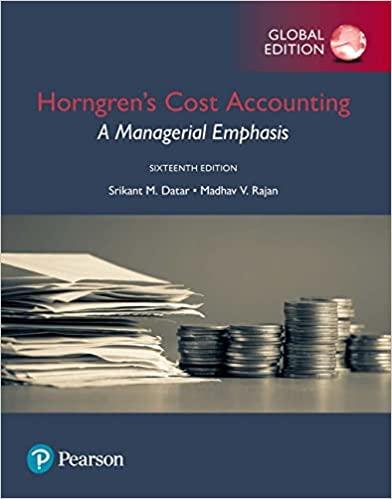Toms Apparels (Ghana) manufactures plain white and solid-colored T-shirts. Budgeted inputs include the following: Budgeted sales and
Question:
Tom’s Apparels (Ghana) manufactures plain white and solid-colored T-shirts. Budgeted inputs include the following:

Budgeted sales and selling price per unit are as follows:

Tom’s Apparels has the opportunity to switch from using the dye it currently uses to using an environmentally friendly dye that costs \($1.50\) per ounce. The company would still need 4 ounces of dye per shirt. Tom’s is reluctant to change because of the increase in costs (and decrease in profit), but the Environmental Protection Agency has threatened to fine the company \($140,000\) if it continues to use the harmful but less expensive dye.
1. Given the preceding information, would Tom’s be better off financially by switching to the environmentally friendly dye? (Assume all other costs would remain the same.)
2. Assume Tom’s chooses to be environmentally responsible regardless of cost, and it switches to the new dye. The production manager suggests trying Kaizen costing. If Tom’s can reduce fabric and labor costs each by 1% per month on all the shirts it manufactures, how close will it be at the end of 12 months to the profit it would have earned before switching to the more expensive dye? (Round to the nearest dollar for calculating cost reductions.)
3. Refer to requirement 2. How could the reduction in material and labor costs be accomplished? Are there any problems with this plan?
Step by Step Answer:

Horngrens Cost Accounting A Managerial Emphasis
ISBN: 9781292211541
16th Global Edition
Authors: Srikant Datar, Madhav Rajan





